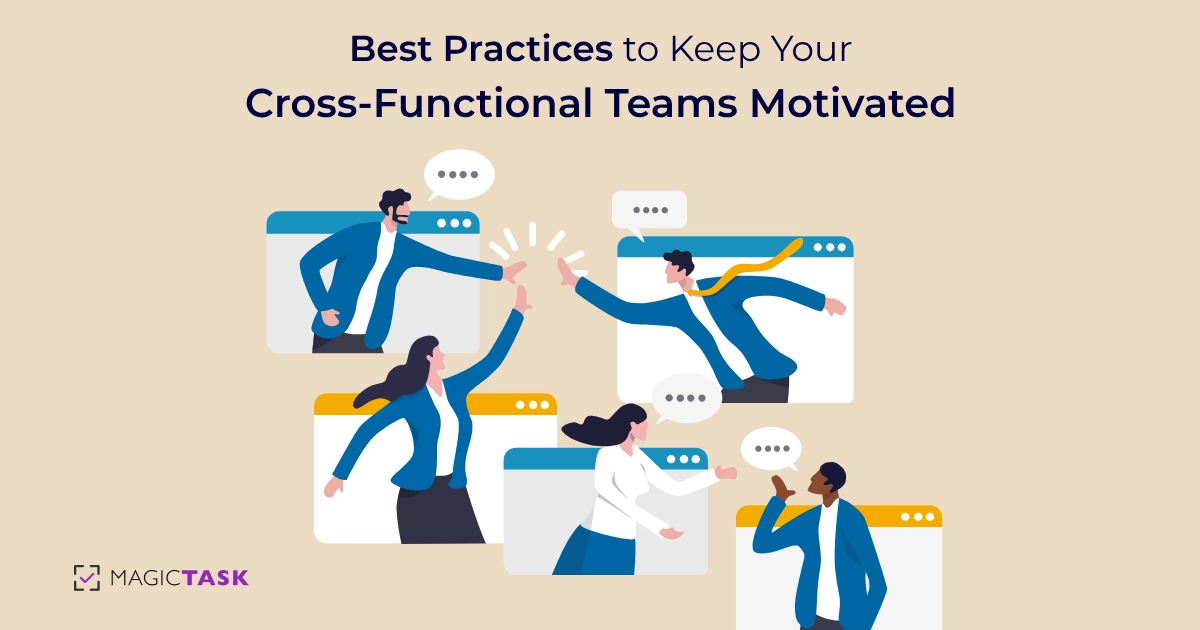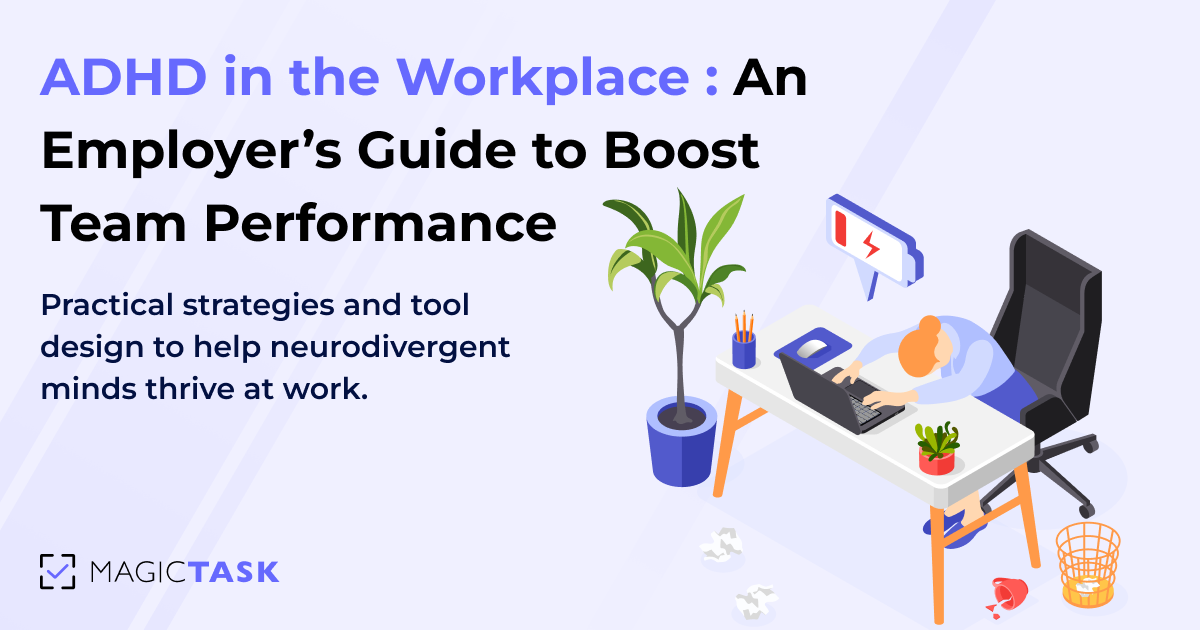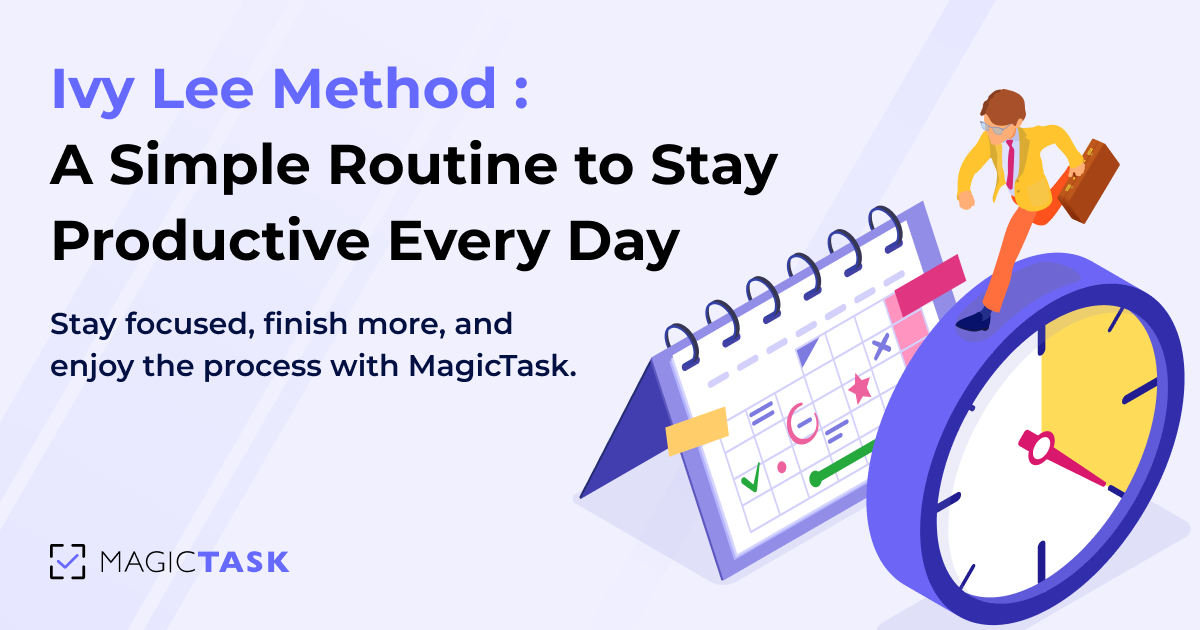How to to Keep Your Cross-Functional Teams Motivated?

Cross-functional teams are essential in today’s organizations—but here’s the challenge: more than 75% of them fail to meet their objectives.
Your success as a leader depends on keeping these diverse teams motivated and aligned.
Whether your cross-functional teams include developers, marketers, product specialists, or all of the above, one thing remains crucial: keeping operations running smoothly across departments while ensuring everyone is focused on the same big-picture goals.
The good news? With the right tools and strategies, you can transform cross-functional collaboration from a frustrating bottleneck into a real competitive advantage.
In this guide, you’ll find proven tactics to energize your teams, streamline workflows, and foster a culture of seamless collaboration.
Let’s get started.
What is Cross-Functional Collaboration?

Cross-functional collaboration happens when people with different skills and roles come together to work toward a shared goal.
Most workers report spending 80% of their time collaborating with cross-functional teams. In other words, the workplace has evolved—from rigid, siloed hierarchies to flexible, dynamic teams that adapt to changing needs.
This shift has been powered by cloud computing, digital tools for remote collaboration, and the rise of project-based work.
Despite their variety, cross-functional teams share some common traits: standardized tools, clear communication frameworks, and team members with well-defined roles.
Together, these traits enable something remarkable: giving team members the autonomy to take initiative and self-organize—a hallmark of successful cross-functional collaboration.
What are the Challenges of Cross-Functional Teams?
Cross-functional teams face significant challenges that can hinder their effectiveness and success. A staggering 75% of cross-functional teams are dysfunctional, failing to meet at least three out of five key performance criteria.
Below are some key challenges that cross-functional teams experience:
1. Too Many Tools, Not Enough Alignment
From my experience, one of the biggest barriers to smooth collaboration is when teams rely on different tools. If marketing uses Asana while development prefers Jira, it creates unnecessary friction. Instead of focusing on the actual work, people waste time translating between systems, duplicating efforts, or figuring out how to stay aligned.
When everyone works within the same toolset, it’s like speaking the same language—it simplifies workflows, reduces confusion, and helps teams focus on delivering results. Standardization isn’t just convenient; it’s critical for success.
2. No Consistency Across Teams
When every department has its own style of working, chaos follows. Mismatched processes and tools lead to fragmented workflows, redundant tasks, and poor project visibility.
It’s like building a house with no blueprint—nothing fits quite right.
3. Communication That Doesn’t Connect
Ever been stuck in endless meetings that solve nothing? You’re not alone—78% of leaders call this "collaboration drag."
Teams struggle with unclear decisions, different jargon, and clashing communication styles. The result? Misunderstandings and a lot of wasted energy.
4. Lack of Trust
Silos aren’t just annoying; they’re damaging. Trust breaks down when teams keep information to themselves or adopt an "us vs. them" mindset.
Without trust, people hesitate to share ideas or ask for help, and collaboration suffers.
5. Red Tape Everywhere
In big organizations, approvals, hierarchies, and endless paperwork can slow even the most straightforward decisions. These bureaucratic barriers leave teams spinning their wheels instead of moving projects forward.
The good news? These challenges aren’t permanent.
By using the right tools and creating clear processes, you can break through these barriers and turn your cross-functional teams into true powerhouses. The payoff is worth it—smoother projects, faster results, and a culture where collaboration thrives.
Best Practices to Enhance Collaboration and Team Motivation

Cross-functional teams work best when they have the right support: clutter-free systems, shared tools, and straightforward processes. These are the building blocks that turn disjointed efforts into seamless collaboration.
Whether you’re working with developers, marketers, product specialists—or all of the above—having these fundamentals in place ensures everyone is moving in sync toward the same goals.
Here’s a closer look at the key practices that can help your teams not just function but truly thrive.
1. Single Platform Approach
When teams share a single platform, everything flows smoothly. With one system for task management, document sharing, communication, and progress tracking, everyone knows exactly where to go for what they need. It’s not just about streamlining workflows—it’s about creating clarity and reducing friction.
Imaginovation, a premium software development company, embraced this concept with MagicTask. MagicTask provides teams with visibility into ongoing work and simplifies collaboration across departments.
Over time, the team at Imaginovation observed that using one consistent system saved time and significantly boosted team efficiency.
It’s proof that collaboration can become second nature with the right platform in place.
2. Documentation Standards
Your documentation system serves as the foundation for frictionless cross-functional collaboration. A well-structured system eliminates the frustrating hours teams waste searching for information or recreating existing documents.
Think of your documentation system as a well-organized library where every team member can quickly find what they need. This looks like creating intuitive folder structures that make sense across departments.
You can set up standardized templates for standard documents like project briefs, status reports, and meeting notes. When every team uses the same formats, you'll see faster document creation and better information comprehension across departments.
Overall, you want to make information access straightforward and democratic. Your system should allow team members to find critical documents without asking multiple people or wading through complex folder hierarchies.
3. Clear Communication Channels
Establishing clear pathways for information flow is critical. When teams know exactly how and where to communicate, productivity increases by nearly five times.
Start by creating a consistent meeting schedule that keeps teams aligned without causing meeting fatigue. Hold regular cross-functional check-ins at key project milestones and use daily stand-ups for quick updates.
For urgent matters, set up a clear system that everyone understands. For example, use specific email subject tags like "IMMEDIATE ACTION REQUIRED" to flag priority issues. Create dedicated Slack channels for time-sensitive topics, and define clear escalation paths for situations that need immediate attention.
Remember, effective communication isn’t just about having the right tools—it’s about fostering a culture where information flows naturally and effortlessly between teams.
4. Establishing Clear Visibility
For cross-functional teams, visibility is essential. Every team member should have insight into who’s working on what, ensuring tasks are balanced and time is respected. When everyone can see priorities, deadlines, and workloads across departments, it’s easier to stay aligned and avoid bottlenecks.
Transparency helps teams focus on what matters most, adjust quickly when priorities shift, and collaborate more effectively. It’s not about monitoring—it’s about enabling more competent teamwork.
5. Empowerment and Accountability
Successful cross-functional teams thrive when they have the freedom to make decisions within clear frameworks. Empower your teams to take ownership of their work without excessive oversight. This autonomy fosters creativity, boosts motivation, and encourages proactive problem-solving.
At the same time, establish clear accountability by setting measurable expectations and ensuring transparency. Team members should understand how their work contributes to larger goals and feel confident discussing priorities or workloads with their managers.
By balancing empowerment with accountability, you create an environment where natural leaders emerge, innovation flourishes, and results improve. Recognize and celebrate individual contributions to reinforce this culture and inspire others to step up.
6. Celebrating Successes
Don’t forget to celebrate wins—big or small. Recognizing team achievements boosts morale and helps build a stronger collaborative culture.
Whether it’s a simple shoutout in a meeting, a team-wide email, or a celebratory event, taking the time to acknowledge hard work motivates teams to keep pushing forward.
How Can MagicTask Help With Cross-Functional Team Collaboration?
MagicTask transforms cross-functional collaboration with features designed to simplify teamwork and inspire motivation. Here’s how MagicTask empowers your teams to perform at their best:
- Unified Visibility: MagicTask provides a clear view of ongoing projects and tasks across departments. Teams can track progress in real-time, identify bottlenecks before they escalate, and understand workloads to maintain balance and avoid overburdening anyone.
- Task Organization: MagicTask streamlines project management by breaking down complex workflows into precise, actionable tasks. Teams can prioritize their work, monitor progress, and meet deadlines without the hassle of juggling multiple tools.
- Workload Distribution: Visual indicators and resource allocation features make assigning tasks, balancing responsibilities, and monitoring performance easy. MagicTask ensures no team member is overloaded and everyone is contributing effectively.
- Points-Based Engagement: Encourage participation by rewarding team members with points for key activities—such as completing tasks, adding new team members, and organizing projects. This system turns everyday work into a motivating experience.
- Gamification Features: Keep teams motivated with engaging elements like achievement badges, performance leaderboards, and regular challenges. These features add a fun, competitive layer that inspires team members to stay focused and productive.
By combining practical functionality with motivational tools, MagicTask transforms cross-functional collaboration into a seamless, engaging, and efficient process. It helps teams overcome challenges, stay aligned, and achieve their goals faster and more confidently.
Final Thoughts
Transforming cross-functional collaboration isn’t just about addressing challenges—it’s about creating a unified, motivated workforce ready to achieve more. MagicTask is designed to simplify this process by providing the tools your teams need to work smarter, stay aligned, and stay motivated.
With features like unified visibility, streamlined task management, and gamification, MagicTask can help your organization achieve seamless collaboration faster.
Ready to empower your teams and see the results for yourself? Try MagicTask today.




